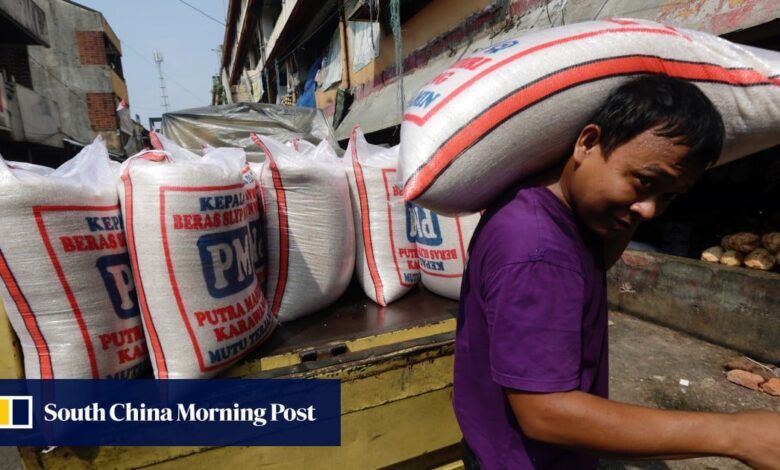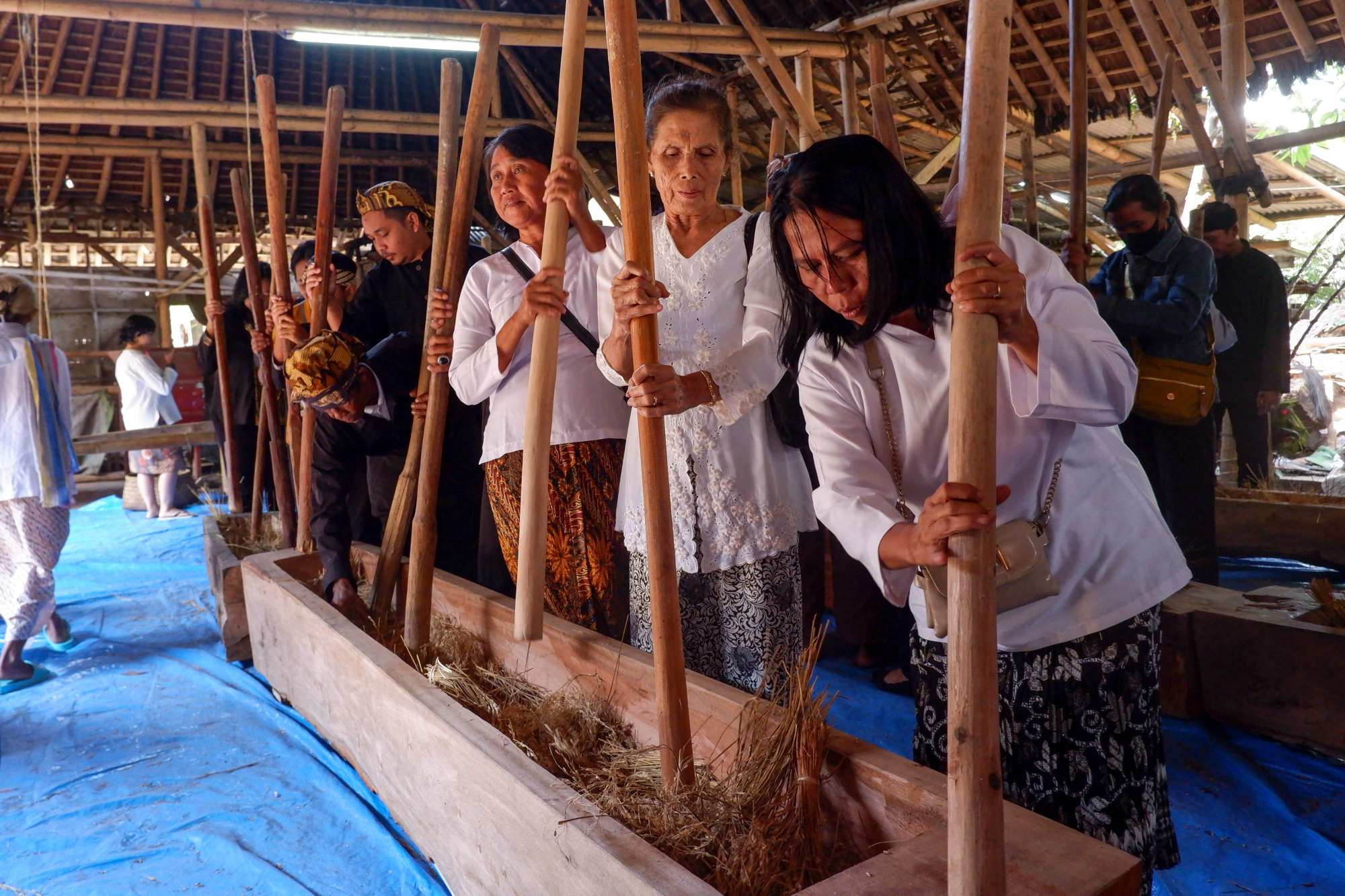Indonesian rice prices surge as drought crimps harvest: ‘We don’t know what’s going to happen’

[ad_1]
Some rice plants with empty husks stand among the crop on Indonesian farmer Akma Rangga’s fields in West Java, which has received barely any rain since April, and must rely on irrigation channels that have nearly dried out.
“We don’t know what’s going to happen in the next month or two,” said Akma, 50, who worries that he may have to delay the next planting cycle if his plot gets no rain by October, amid Indonesia’s driest weather in four years.
Hot weather in key growing regions across Asia threatens harvests, driving up rice prices as much as a fifth, with countries led by top exporter India limiting shipments to rein in inflation and ensure food security for their people.
Combined with slow imports and stocks in Indonesia’s biggest rice market down about a third from last year, the heat brought by an El Nino weather pattern expected to peak around October is fuelling concern that prices could hit their highest in years.
Philippines seeks 330,000 tonnes of rice amid dwindling stocks and price rise
Philippines seeks 330,000 tonnes of rice amid dwindling stocks and price rise
Rice is a staple for most of Indonesia’s 270 million people and price movements are politically sensitive, especially ahead of elections due in February. Rising prices also threaten recent government success in controlling inflation.
If the situation does not improve, rice prices could hit a multi-year high of 15,000 rupiah (98 US cents) a kg, said Zulkifly Rasyid, chairman of a cooperative of rice wholesalers in Indonesia’s largest market of Cipinang.
Just 1.5 million metric tons of the grain have arrived from a total of 2.3 million Indonesia authorised this year to blunt the impact of El Nino, state buyer Bulog has said, with 400,000 tons still on the way, and 400,000 tons yet to be contracted.
Bulog, which typically imports from major sellers India, Thailand and Vietnam, is turning wider afield to Cambodia and Myanmar, but its chief executive, Budi Waseso, said Cambodia’s asking price was too high and he hoped to find alternatives.
“God willing, by November the supplies will be here,” he said.
On paper, supplies should be adequate. The National Food Agency estimates El Nino could shrink rice output between 5 per cent and 7 per cent this year from 31.54 million tons last year, but the shortfall should be covered by an existing import quota.
Indonesia’s last El Nino, in 2019, took down rice output about 7 per cent, but domestic prices kept steady, as Bulog had adequate supplies to intervene in the market after large imports a year before.
Though only a moderate impact of the warming Pacific current had been expected, average rice prices have risen 15 per cent on the year to 13,800 rupiah a kg, as Bulog began the year with low stocks and the import decision came late.

“Buyers are grumbling”, said Aam, 45, who runs a grocery store in South Jakarta, adding that his sales had almost halved since he had to raise prices nearly every day. “Of course sales are declining”.
Annual rice inflation hit 13.76 per cent in August, its highest since June 2012, though a rise of 3.27 per cent in the consumer price index was within the central bank’s target.
[ad_2]
Source link






